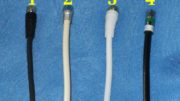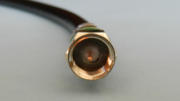No matter how hard you try, you will eventually end up with a box of different cables. You will not know what some of these cables do, and when you go looking for the right one, you will find the wrong one over and over again. Don’t worry, everyone does it.
You would think that in the world of video and audio, that there would really be one cable and one connector. We’re not far from that, but there are still some connectors that are different and there are reasons for it.
The most common connector types
There are essentially three types of common connectors on coaxial cables. While there are variants, each falls into one of three families.
F Connectors
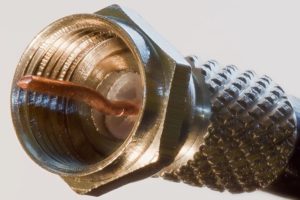
The F connector is the one you’ll see for over-the-air antenna, cable, satellite, and most home cell boosters. It’s used with 75 Ohm cables and in general has a very wide frequency response. It’s become common because of people’s desire to use one cable to do a lot of things. If you are running coaxial cable in a home, chances are you’re using F connectors.
There are a few variants here. The ugly-looking example at the top is a screw-on type, used only for over-the-air antennas. There are compression connectors and crimp-on connectors that hold the connector more securely and create a better seal.
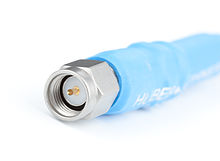
In addition, there are the subminiature versions. Subminiature type A (SMA) connectors are found more often on 50-ohm cables but they have properties similar to those of F connectors. FME connectors are also similar to F connectors but smaller.
N Connectors

The N connector is an industrial-strength connector that is used for commercial applications requiring 50 ohm cable. It provides two levels of shielding and a center pin that keeps the bare wire of the cable from being exposed at all. The N connector is larger than the F connector, making it easier to tighten precisely. Yet, it’s large size is also a hindrance in tight areas.
While some installations are moving to SMA connectors for the same kind of cables that once used N connectors, plenty of industrial equipment still uses N connectors because of their durability.
BNC connectors
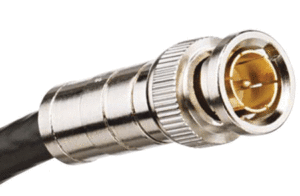
BNC connections are used where you need the industrial quality of the N connector but also need to be able to remove the cable quickly. The BNC connection is unique in that it uses a push-and-turn locking method. (The “B” in BNC stands for “Bayonet,” which is something else you push in and turn. I’ll wait while you google it.) BNC connectors are among the few that are seen on both 50-ohm and 75-ohm cables.
BNC connectors are durable and do a good job of keeping the cable from being exposed to air. However, they have less shielding than an F or N connector, owing to the slot which allows it to attach and detach easily. This makes them unsuitable for high-frequency applications.
There is a variant of BNC called TNC which uses the same inner dimensions as BNC but uses a twist-on connection instead. This connector has been used for 50-ohm antennas in the past.
Can’t you just have one connector?
Each of these connectors and their variations were invented for a specific reason. Most often, the inventor was looking for good performance in a specific frequency range. Then, they added durability. Many connectors started in military or space applications where durability was just as important as performance.
At the time when a lot of these connectors were invented, manufacturing wasn’t as precise as it is now. Without computer-guided assembly, it wasn’t possible to make connectors that performed as well as today’s connectors without making them very thick and bulky.
You absolutely could have a connector that suited virtually any need. The SMA connector would probably be a good candidate for this, with a few variations. But of course, this would create other obstacles. There are different kinds of cables, and in today’s world it’s very easy to tell one from another because of the connector on the end. If everything had the same connector, there would be a greater chance that you would pick up the wrong one.
No matter what cable or connector you need, you’ll find the best ones when you shop the great selection at Solid Signal.



